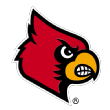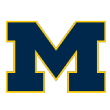The Heisman race is almost settled, but the debate about how the five finalists translate to the NFL is just beginning. Our NFL draft insiders, Mel Kiper and Todd McShay, go back and forth on each player -- what they do well, where they can improve and where they could be drafted. Let's dig in.

Lamar Jackson, QB, Louisville
Kiper: Let's get this out of the way: I don't view Jackson as an NFL quarterback prospect at this point. He's an athlete -- a phenomenal one at that -- playing quarterback, but I haven't seen consistent NFL-level passing skills. Jackson has completed only 57.6 percent of his passes this season (54.7 in 2015), and that's a huge red flag for NFL teams. If he can't complete 65 percent of his passes in the ACC, what optimism is there for completing 65 percent of his passes in the NFL?
McShay: I think he has some Michael Vick-type qualities. Jackson's rushing ability is obvious (1,538 yards and 21 TDs on the ground) and he has really good arm strength. He can make any throw you want from a velocity standpoint, but you're right, Mel: Jackson leaves way too many throws on the field right now. (Vick did too, finishing his college career with a 56.0 completion percentage.) Beyond the accuracy issues, the biggest area Jackson needs to improve is in his footwork.
Kiper: The good news? He has time to improve. He's only a sophomore, and maybe he'll overhaul his mechanics in the offseason and become an efficient thrower next season. But Jackson needs to make a quantum leap in his passing skills.
McShay: He also needs to fill out his frame. He has adequate height for a quarterback (6-foot-3), but he's so lean right now (205 pounds). NFL quarterbacks who are around 200 pounds and rely on their mobility don't usually stay NFL quarterbacks for long.
Kiper: Could Jackson play another position? You mentioned his size, Todd, and he received some interest as a defensive back when he was being recruited out of high school. What about as a receiver, where we've seen some athletic college quarterbacks -- Arkansas' Matt Jones and Indiana's Antwaan Randle El, for example -- transition to?
McShay: It's possible. Jackson's upside as a passer is there -- he already has the height, the arm and the mobility -- and I'd expect him to grow as a passer over the next two years in that system. Will that be enough to make him a legit NFL prospect at quarterback? We'll see.
Where Jackson projects in the draft
Kiper: It's impossible to project at this point because I don't know what position he'll play.
McShay: I'm in the same boat. Jackson is only 20 and could stay in school two more years. A lot can happen in two years.

Baker Mayfield, QB, Oklahoma
McShay: There's no question Mayfield made the right decision to come back to school. Another year of experience will benefit him at the next level, even if he's only a backup.
Kiper: I love his competitiveness and the way he extends plays and throws on the run, but his size is an issue at the next level. Mayfield is listed at 6-1, 210 pounds, and he could come in a littler shorter when he measures up in front of scouts. That's well below the average for a starting quarterback in the NFL.
McShay: Absolutely. Mayfield is an exciting player and his style of play has been welcome in college football and a huge part of Oklahoma's success, but he doesn't have the frame to take a similar level of punishment at the NFL level.
Kiper: Mayfield's huge numbers -- 74 touchdown passes to only 15 interceptions over the last two seasons -- have been aided by some truly horrific defenses in the Big 12. Just look at the QB numbers in this game. He has a decent arm and is accurate -- especially on the run -- but I don't see him as a possibility on Day 1 of the 2018 draft.
McShay: He'll get drafted, though. A team will bring him in to see if he can pick up the offense and be a good No. 3 in the short-term, with hopes that he eventually develops into a solid No. 2. He's going to have to be steadier in a rhythm-based pro-style offense. That's an unproven part to his game right now.
Where Mayfield projects in the draft
Kiper: Third- or fourth-round pick.
McShay: Day 3.

Jabrill Peppers, S, Michigan
Kiper: Peppers isn't going to be for everybody -- not all 32 teams are going to give him a high grade. He's a tweener (6-0, 210) without a set NFL position. He's too small to be an every-down linebacker, and he's not a center field-type safety.
McShay: There are more mixed opinions on Peppers in scouting circles than I was expecting, to be honest. I think he's a Deone Bucannon-type player -- nickel/safety/outside linebacker hybrid. He's likely to play in the slot.
Kiper: I've got the same comp, Todd. Su'a Cravens, the Redskins' rookie who has made some big plays this season, is another one who comes to mind. But Peppers is faster than those guys. He's supremely talented, and a team is going to have to pick him with a specific role in mind. He could be an in-the-box safety or linebacker who helps in run support and goes out and covers receivers and tight ends.
McShay: The biggest knock I have on him is his lack of ball production. He has only one career interception in 27 games. But he has just about everything else you want: exceptional football IQ, great work ethic/leadership skills, he blitzes, he covers, he supports the run. This is a good, instinctive football player.
Kiper: He's a special athlete, too, and he brings a lot of value as a returner. Some team is going to take him high in the first round.
Where Peppers projects in the draft
McShay: First half of the first round.
Kiper: Top-10 pick.

Deshaun Watson, QB, Clemson
Kiper: After last season's national title game, when Watson had 405 passing yards and four touchdowns in the loss to Alabama, I thought he would be unstoppable in 2016. Watson was the runaway Heisman favorite headed into the season, and I ranked him as my No. 1 quarterback. But he hasn't reached that peak, and he has taken a step back, even as Clemson returned most of the starters from that team.
McShay: The fact that Watson hasn't taken a leap forward is concerning, and I've dropped him a bit on my board, although he's still my No. 2 quarterback. (This is a particularly weak QB draft class at the top.) Watson has played better in the past few games (10 TDs, 2 INTs) after a three-interception performance cost Clemson against Pitt.
Kiper: The interceptions are worrisome -- that's now 28 in two seasons -- and he makes some head-scratching decisions at times. He just hasn't played like a first-round pick.
McShay: Watson's intermediate-to-deep accuracy is still an issue: He has 10 picks on passes of 15 yards or more this season, second-most among Power 5 QBs. Watson is at his best when he's able to run and extend plays and create with his feet in addition to throwing. He suffered the shoulder injury against Syracuse, and that seemed to throw him off for a bit.
Kiper: At 6-2, 210 pounds, he doesn't have ideal size, so that was already working against him. He does some things really well -- throwing on the move and showing some touch, among those qualities -- and I think he has an NFL future if he keeps maturing and developing and gets in the right system. I dropped him down my QB rankings, though; he's No. 5 right now.
McShay: I'm excited to watch him against all of the talent Ohio State has on defense -- and possibly in another national championship game against Alabama. He has been a clutch performer throughout his career, but he'll need to protect the ball better, particularly near the red zone.
Where Watson projects in the draft
Kiper: Second- or third-round pick.
McShay: Agree. Day 2.

Dede Westbrook, WR, Oklahoma
Kiper: Westbrook made a huge improvement this season, posting staggering numbers after a slow start to the season. He's a dynamic down-the-field threat -- he blows by defensive backs on a regular basis.
McShay: I don't know that he's a true burner at the next level. I see a 4.5 guy on tape. He's quicker than he is fast, showing incredible elusiveness after the catch. The big question: What's his real speed? His combine 40 times will factor heavily into where he gets taken.
Kiper: At 6-0, 175 pounds, Westbrook doesn't have the size of a prototypical No. 1 NFL receiver, but his value is in that he could play inside and outside. He also made some really tough catches this season. I think the solid rookie campaign from former Sooners receiver Sterling Shepard will help Westbrook in the eyes of NFL scouts, even though Westbrook is a much different player.
McShay: We'll see about that. Again, it depends on what he runs. Shepard ran a 4.48 last year, but he weighed in at 194. If Westbrook is really 175, he needs to beat that time. I still have some work to do on him from a film-study standpoint, but right now, I see him as a No. 3/4-type -- a slot guy who needs to get bigger and strong and develop his route-running skills.
Kiper: Westbrook is my No. 7 receiver right now. I think his stock could rise with a good showing at the Senior Bowl and at the combine.
Where Westbrook projects in the draft
McShay: Mid-round pick.
Kiper: Second-round pick.


